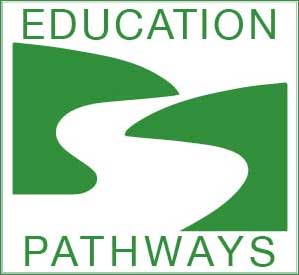The Evolution of Mortgage Closings: Navigating the Digital Frontier

In mortgage industry, one of the most notable shifts has been the introduction of remote mortgage closings. The traditional image of borrowers sitting across the table from lenders to finalize the deal has given way to a more technologically advanced and convenient process. In this comprehensive overview, we delve into the meaning of remote mortgage closing, the step-by-step process, expectations, requirements, and most importantly, the transformative impact of technology on this essential facet of the lending world.
Understanding Remote Mortgage Closing
Remote mortgage closing refers to the practice of completing the final stages of a mortgage transaction without the need for physical presence. This innovation has gained momentum due to technological advancements that enable seamless and secure digital transactions. The process not only adds convenience for borrowers but also streamlines operations for mortgage lenders.
The Process of Mortgage Closing
Closing a mortgage involves several key steps, regardless of whether it’s conducted remotely or in person. These include reviewing and signing documents, transferring funds, and officially transferring the property’s ownership. In a remote closing scenario, these steps are executed electronically through secure platforms, bringing efficiency and accessibility to the forefront.
What to Expect at a Mortgage Closing
Borrowers embarking on a remote mortgage closing can expect a well-orchestrated digital experience. Instead of a physical meeting, they will engage with digital documents and online platforms. Expectations include a thorough review of the loan documents, confirmation of terms, and the digital execution of signatures. Additionally, funds are electronically transferred, marking the completion of the transaction.
Requirements for Remote Mortgage Closing
To facilitate a remote mortgage closing, certain requirements must be met. Both borrowers and lenders need access to secure online platforms that comply with legal and regulatory standards. Digital signatures, secure communication channels, and encrypted document storage are essential components of a robust remote closing infrastructure.
How Long Does It Take?
The timeline for a remote mortgage closing can vary, but the use of technology has significantly expedited the process. Traditional closings might take several hours due to document handling and coordination, while remote closings, leveraging digital tools, can be completed in a matter of hours or days. The efficiency gains not only benefit borrowers but also contribute to lenders’ operational effectiveness.
The Impact of Technology on Remote Mortgage Closings
The use of technology has undeniably revolutionized the mortgage industry, particularly in the domain of remote mortgage closings. This shift has not only enhanced the efficiency of the closing process but has also introduced a level of convenience that was previously unimaginable
- Electronic Signatures
One of the most significant technological advancements in remote mortgage closings is the widespread adoption of electronic signatures. Platforms like DocuSign and Adobe Sign have become instrumental in facilitating the digital signing of documents. This not only expedites the process but also ensures the legality and authenticity of signatures, eliminating the need for physical paperwork and reducing the risk of errors.
- Secure Document Sharing
Traditional mortgage closings involve an extensive exchange of physical documents, leading to delays and potential security risks. Technology has addressed this challenge through secure document sharing platforms. Lenders now utilize encrypted file-sharing services to exchange confidential documents with borrowers. This not only ensures the privacy of sensitive information but also streamlines the document review process.
- Virtual Communication Tools
In the absence of face-to-face meetings, effective communication becomes paramount in remote mortgage closings. Virtual meeting platforms such as Zoom, Microsoft Teams, and Skype have become essential tools for lenders and borrowers to engage in real-time discussions. These platforms enable parties to clarify doubts, discuss terms, and ensure a transparent communication channel throughout the closing process.
- Secure Online Platforms
The foundation of a successful remote mortgage closing lies in the utilization of secure online platforms that comply with regulatory standards. These platforms serve as the digital workspace for all stakeholders, providing a centralized hub for document storage, communication, and transaction tracking. Secure platforms like Pavaso and Nexsys Clear Sign ensure the integrity of the closing process while adhering to legal requirements.
- Blockchain Technology
Blockchain technology is making inroads in the mortgage industry by offering a decentralized and tamper-resistant ledger. This can enhance the security and transparency of the closing process. Blockchain ensures that each transaction is recorded in a secure and unalterable manner, providing an extra layer of trust for both lenders and borrowers.
- Artificial Intelligence (AI) and Machine Learning (ML)
AI and ML algorithms are being employed to analyze vast amounts of data quickly and accurately. In the context of remote mortgage closings, these technologies can assist in automating tasks such as document verification, fraud detection, and risk assessment. By harnessing AI and ML capabilities, lenders can enhance the accuracy of decision-making processes and reduce the likelihood of errors.
- Mobile Applications
The rise of mobile applications tailored for mortgage transactions has further facilitated remote closings. Borrowers can conveniently access documents, review terms, and communicate with lenders through user-friendly mobile apps. This level of accessibility not only caters to the preferences of modern consumers but also ensures a seamless and on-the-go closing experience.
In conclusion, the role of technology in remote mortgage closings is pivotal in reshaping the way lenders and borrowers navigate the final stages of a property transaction. The convenience, efficiency, and security afforded by digital tools not only benefit all parties involved but also contribute to a more agile and resilient mortgage industry. As we continue to embrace the digital frontier, the evolution of remote mortgage closings stands as a testament to the transformative power of technology in the realm of lending.
